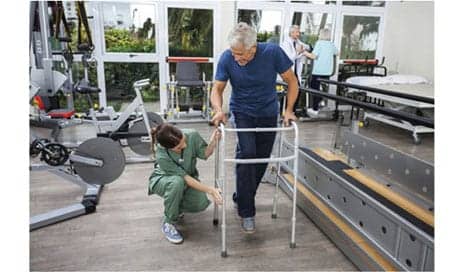By Cher Zavala
Big data influences nearly every aspect of our lives these days. Everything from the groceries seen on store shelves to the advertisements on computer screens and just about everything in between is directly influenced by big data, and that trend isn’t showing any signs of going away.
It only makes sense, then, that the healthcare industry has also jumped aboard the big data train and is working to find ways of analyzing and mining data to uncover insights that might help improve outcomes. The idea of using data and evidence-based research is really nothing new in healthcare, as such analysis has long been used to determine best practices for the care and treatment of patients, but the sheer amount of data being collected these days is more than any researcher or provider has ever seen or used before.
In the field of rehabilitation in particular, not only is there a significant influx of data, there isn’t yet a set of standards for most effectively gathering, manipulating, and analyzing data and putting it to use. As a result, most practitioners are taking a more experimental approach to working with data, and addressing the opportunities and challenges that this new paradigm presents.
Moving From Causation to Correlation
First, take a look at the opportunities that big data represents for a rehab practice. Perhaps one of the most noticeable shifts that is taking place due to big data is a widespread change from looking at causes and subsequent responses, and looking more at correlations between different variables. The typical methods of data analysis compare data to existing knowledge, and draws conclusions based on that comparison.
To use an example from the banking industry, data analysis is commonly used in fraud detection: When a customer’s debit card is used to make a purchase, the characteristics of that purchase are compared to vast stores of data related to fraudulent purchases, including the customer’s own purchasing patterns. If a certain number of markers are identified, the bank can then contact the customer to confirm the purchase, and decline the transaction if necessary. Within healthcare, the same principles apply: An individual’s condition is compared to data related to other patients with similar symptoms, and a treatment plan is devised.
By shifting to a data-mining perspective, though, and focusing on correlations rather than causations, practitioners can look for patterns within data sets that may bring forth new ideas and treatment protocols. With the amount of data being collected via electronic health records, electronic clinical outcome assessments in research and clinical trials, insurance claims, and more, patterns will become easier to spot — and new ways of working with the data will emerge. This will present additional opportunities for improving your practice, including:
- Improving communication with patients. One of the most common questions that patients have is “How long will treatment take?” Using data mining, you can compare similar patients to not only develop effective treatments, but also provide a better estimate of how long the therapy will take, how much pain or difficulty they may experience, and how to avoid setbacks. This improved communication will help create more satisfied patients and better outcomes.
- Creating measurable goals. Big data provides evidence of measurable outcomes in rehab — information that therapists can use to both set goals for their patients and find better ways for their patients to meet those goals more quickly. More efficient care can reduce cost, and improve patient satisfaction.
- Improving your provider skill sets. Comparing your facility’s performance against national and local performance, you can identify patterns, both in strengths and weaknesses, and put that information to work in creating employee development plans to improve the overall performance of your practice.
For all of the opportunities that big data provides, though, there are still challenges.
What Do We Do With This Data?
As previously mentioned, one of the major challenges to using big data to its greatest advantage in rehabilitation is the fact that it’s still relatively new, and there are not yet prescribed standards for the collection and use of the data. That is all changing, but there are some other challenges that practices and providers face.
- Determining the best tools for data collection. The question is no longer if a practice should use an electronic medical record, but which medical record it should use to best match the needs of the practice. It’s also important to consider how well the system retrieves and uses data from all of the sources that are collecting data. Data needs to be put into usable, comparable formats if it’s going to be useful.
- Putting data to work. Perhaps the greatest challenge for rehabilitation providers is determining how to put the data they collect to work. Providing healthcare is no longer about seeing as many patients as possible to collect higher reimbursements. Rehab practitioners must now prove that they are improving outcomes, not just providing services. Data can help with this, but only when providers are able to use the data they collect to better inform treatment plans.
Big data is perhaps the most disruptive trend in healthcare of this century, and we’re only in the early stages of its dominance. Rehabilitation providers will be well served to address the challenges and find ways to put data to work if they want to remain competitive in the years to come.
Cher Zevala is a content coordinator specializing in topics associated with the healthcare industry and innovations in the healthcare field. She is also a contributing writer to Rehab Management. For more information, contact [email protected].






